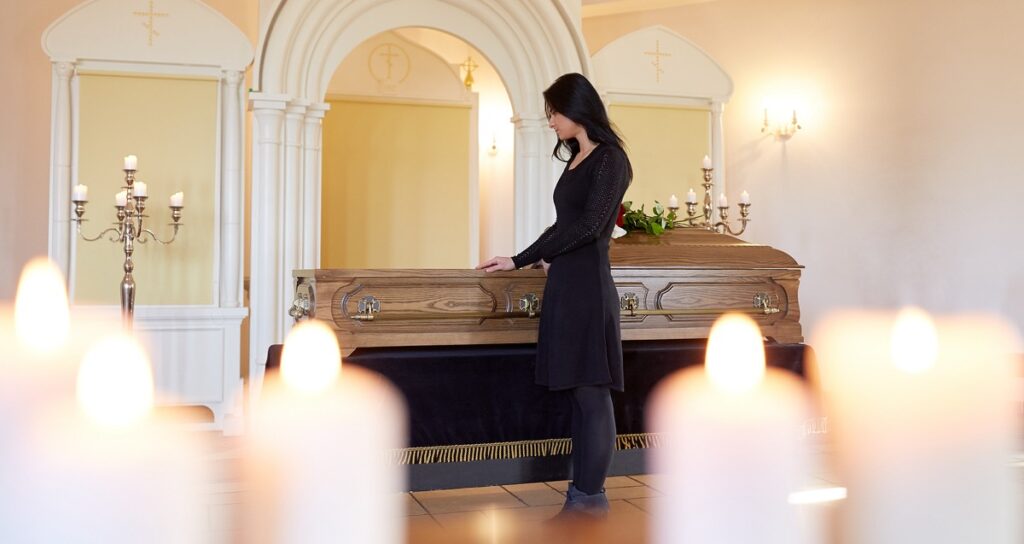Embalming is the process of preserving a deceased person’s body by delaying decomposition through the use of chemical solutions. This practice has been around for thousands of years and is most commonly performed today for funerals, public viewings, or when transportation of the body over long distances is required. The goal of embalming is to maintain the body’s appearance and prevent decay long enough to allow family and friends to say their goodbyes.
Is Embalming Necessary?
Embalming is not always required, but it can be necessary or desirable in certain situations:
- Open-Casket Funerals: Embalming is often performed for open-casket funerals to preserve the body’s appearance and provide a more life-like look for viewings. It helps families achieve a sense of closure by allowing them to see their loved one at rest in a dignified manner.
- Transportation: When a body needs to be transported over long distances, especially across state or national borders, embalming may be required by law to prevent the spread of disease and manage decomposition during the journey.
- Legal or Cultural Requirements: Some countries, states, or specific funeral homes may have legal requirements for embalming under certain conditions, such as if a body isn’t buried or cremated within a certain time frame. Additionally, some cultures and religions prefer embalming for funeral rites.
- Health and Safety: Embalming can prevent the rapid spread of bacteria that can occur after death. By sanitizing the body, it minimizes health risks for those handling it.
What Is Done During the Embalming Process?
The embalming process is carried out by a licensed embalmer or mortician and involves several steps:
- Sanitation: The body is first cleaned to ensure any bacteria or bodily fluids are removed. Hair may be washed, and nails might be cleaned and trimmed.
- Arterial Embalming: A formaldehyde-based solution is injected into the arteries through a process known as arterial embalming. Blood is drained from the veins as the embalming fluid replaces it. This process preserves the tissues and prevents decomposition.
- Cavity Embalming: After arterial embalming, the internal organs are treated. A trocar (a hollow instrument) is inserted into the body to remove fluids from the internal organs, and a preservative solution is injected into the chest and abdominal cavities to ensure these areas are properly preserved.
- Cosmetic and Restorative Work: Once the body is embalmed, makeup, hairstyling, and other cosmetic work may be performed to enhance the body’s appearance. This may include closing the mouth and eyes to give a restful expression.
- Dressing and Placement: The final step involves dressing the body in clothes provided by the family and placing it in a casket or other container. This prepares the body for the funeral service or viewing.
Common Questions About Embalming
Here are some frequent questions and their answers about embalming.
Is Embalming Required By Law?
In most cases, embalming is not legally required unless the body is being transported over state lines or kept for an extended period before burial. However, some funeral homes may have their own policies regarding embalming for open-casket viewings.
How Long Does Embalming Preserve a Body?
Embalming temporarily slows the decomposition process but does not stop it entirely. A properly embalmed body can look presentable for a few days to a few weeks, depending on environmental conditions. However, decomposition will eventually occur.
Is Embalming Safe?
Yes, embalming is safe for both the embalmer and those who handle the body afterward. Licensed embalmers follow strict safety and sanitation protocols to protect themselves and others from health risks.
Can You Have a Viewing Without Embalming?
Yes, in many cases, a viewing can occur without embalming, especially if the body is kept cool and the service is held shortly after death. However, embalming is recommended for longer delays between death and the funeral.
What Happens If You Don’t Embalm a Body?
If a body is not embalmed, it will begin to decompose at a faster rate, particularly if it’s exposed to heat or not properly stored. In some cases, refrigeration is used as an alternative to embalming to slow decomposition.
Does Embalming Hurt the Body?
Embalming is a non-invasive process for the deceased. The body is treated with care, and there is no pain involved since the person has already passed away.
How Long Does the Embalming Process Take?
Embalming typically takes 1.5 to 2 hours, depending on the condition of the body and the techniques used. Additional time may be required for cosmetic work and dressing.
How Much Does Embalming Cost?
The cost of embalming can vary widely depending on the funeral home and region. On average, embalming costs between $500 and $1,200 in the United States. This fee is often part of a funeral package.
Is Embalming Allowed in All Religions?
Religious views on embalming differ. For example, some Christian denominations, such as Roman Catholics, allow embalming, while many Jewish and Muslim communities prefer immediate burial without embalming due to religious traditions.
Can You Be Embalmed at Home?
Home embalming is rare and heavily regulated. In most places, only licensed professionals are legally allowed to embalm bodies. However, home funerals, where the body is cared for by family members, may be possible in some areas without embalming, depending on local laws.
Why Embalming?
Embalming can be a necessary or desired part of the funeral process for those seeking an open-casket viewing, the ability to transport a body long distances, or simply for health and safety reasons. While it is not always required, many families choose embalming to ensure their loved one is presented in the best possible way during the farewell process. If you’re planning a funeral, understanding the embalming process can help you make informed decisions based on your family’s needs and preferences.

